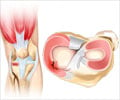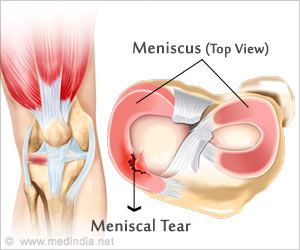Highlights
- The Cell bandage was developed to enable the meniscal tear to repair itself by encouraging cell growth in the affected tissue.
- Meniscus tear occurs in the rubbery knee //cartilage that cushions the shinbone from the thighbone.
- When tested , the bandage helped restore normal knee functionality within 24 months of injury.
Meniscal tears affect over one million people a year in the US and Europe alone and are particularly common in contact sports like football and rugby. When the tear occurs in the white zone of meniscus which lacks a blood supply, it becomes difficult to repair. Many professional sports players opt to have the torn tissue removed altogether, risking osteoarthritis in later life.
A prototype version of the Cell Bandage was trialled in five patients, aged between 18 and 45, with white-zone meniscal tears. The procedure involved taking stem cells, harvested from the patient's own bone marrow, which were then grown for two weeks before being seeded onto a membrane scaffold that helps to deliver the cells into the injured site.
The manufactured Cell Bandage was then surgically implanted into the middle of the tear and the cartilage was sewn up around the bandage to keep it in place.
All five patients had an intact meniscus 12 months post implantation. By 24 months, three of the five patients retained an intact meniscus and had returned to normal knee functionality whilst the other two patients required surgical removal of the damaged meniscus due to a new tear or return of symptoms.
"We are currently developing an enhanced version of the Cell Bandage using donor stem cells, which will reduce the cost of the procedure and remove the need for two operations."
Reference
- Anthony Hollander, Stem cell living bandage for knee injuries trialed in humans, Stem Cells Translational Medicine (2016).
Source-Medindia














